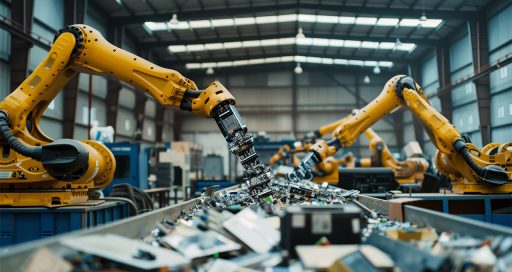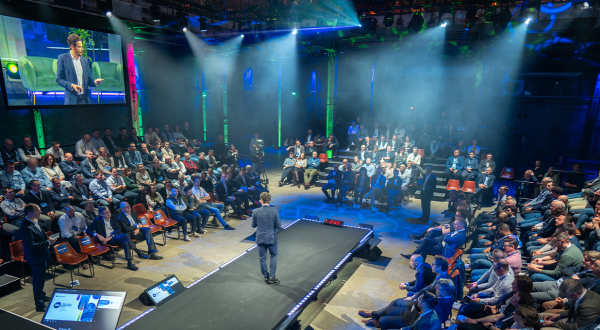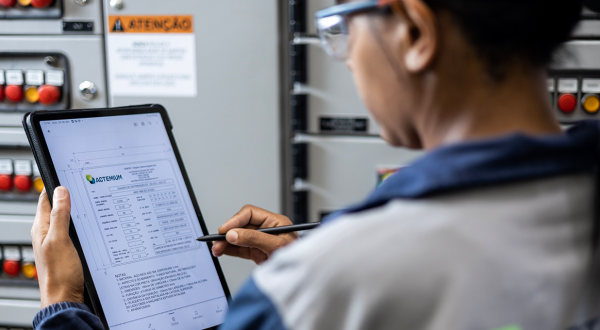Electronic waste is now a global problem. To accelerate its recycling, the dismantling process can be optimised using robots, offering a number of ecological, economic and social advantages.

The urgency of our ecological transition highlights the importance of properly managing environmentally damaging waste from electrical and electronic equipment (WEEE). This waste is also a potential alternative source of raw materials for industry in the face of resource depletion and geopolitical instability. This is all the more important given that the demand for critical materials will only continue to increase.
WEEE already represents a colossal quantity of toxic, yet extremely valuable, waste – the raw materials present in this waste collected every year are worth around US$57 billion. The International Telecommunication Union estimates that in 2014, the quantity of WEEE produced worldwide was 44.4 million tonnes, but this is expected to reach 74.7 million tonnes by 2030, having almost doubled in just 16 years.
A different method
Recycling exists for this all-pervasive and toxic waste, but the process is far from satisfactory. Ali Hamdan, Environment Market Manager at Actemium, explains that “WEEE recycling currently involves rough crushing, followed by a sorting process to recover certain materials.”
But the problem is that “This method is not suitable for complex devices like smartphones, servers and computers, which contain numerous technologies and critical materials. Plus, it doesn’t allow the re-use of components that still work at the device’s end of life and can be costly to manufacture, such as electronic cards, protective glass, and electric vehicle battery cells.”
“Actemium has a range of expertise to meet the technological requirements of robotic dismantling”
The separation of components from end-of-life equipment for re-use or recycling is currently almost exclusively done manually, due to the difficulty in identifying waste and the complex manipulation required. This makes it slow, costly, and an arduous task for the operators.
A modern solution
Robotic dismantling offers a potential technological solution for more efficient recycling. The stakes are certainly high. The European Union, which though it produces the most waste per person, does have the world’s best collection rates (54% on average), thanks to its WEEE and RoHS (restriction of hazardous substances) directives, but in Asia the rate stands at around 12%, and elsewhere in the world (the Americas, Oceania, Africa) is below 10%. Looking beyond WEEE, questions remain over rapidly increasing quantities of electric vehicle batteries, which like WEEE, contain high-value components: lithium, nickel, cobalt, manganese, etc.
Ali Hamdan explains that “Robotising these procedures can increase productivity by assisting the human operators, and recover certain extremely high-value materials, helping to reduce dependence on virgin raw materials and sustain a circular economy.”
Robotic dismantling allows much larger-scale operations and therefore drives down costs. It can outperform human operators in terms of throughput, safeguards workers’ health, addresses the lack of qualified human resources, and can ultimately improve the quality of recovered components by eliminating human error.
Advanced robotics
Automated dismantling requires advanced robots equipped with sensors, along with specialised machinery. Developments in Industry 4.0, IoT (Internet of Things) technologies, and advanced robotics (cooperative and collaborative robots) herald significant technological advances that promise to make robotic dismantling feasible.
“As part of this evolution, Actemium is ready to perform the role of industrial integrator,” says Ali Hamdan. “We have a range of expertise to meet the technological requirements of robotic dismantling (robotic mechanical engineering, specialised machinery, machine vision, artificial intelligence and machine learning, manual processes, etc.). Actemium business units can also operate as systems integrators, depending on the size of the project and their available capacity.”
Battery dismantling
Robotic dismantling is no longer science fiction. Use cases already exist, including in the electric vehicle battery and smartphone sectors.
The Swedish battery maker Northvolt and the Norwegian energy and aluminium company Hydro have joined forces with a jointly owned company named Hydrovolt. Their goal is to provide sustainable battery recycling in Europe.
Their first recycling plant in Fredrikstad, Norway, treats 12,000 tonnes of batteries a year, equivalent to 25,000 lithium batteries. Hydrovolt has automated the pre-treatment stages for an end-of-life battery.
Another example is Li‑Cycle. This Canadian company has invented a recycling procedure for all lithium batteries with a recycling efficiency rate of 95%. Its target worldwide treatment capacity is 100,000 tonnes of materials a year. Li‑Cycle recently opened a facility in Magdeburg, Germany – the company’s first site in Europe and its fifth overall. Two more have been announced, including one near Lens in France.
“But an eco-design approach is needed to make lithium battery dismantling easier,” says Ali Hamdan. “This means anticipating the product’s recycling at the design stage to facilitate the dismantling process. The lithium batteries made by the French company Gouach are eco-designed, avoiding non-reversible assembly processes like welding and gluing.”
Use cases have also been implemented for robotic dismantling of smartphones. Apple’s Daisy process, for instance, uses a line of four dismantling cells. These can dismantle 200 iPhone devices an hour (18 seconds per phone), a total 1.2 million phones (of 23 different models) a year. “Other major smartphone manufacturers are introducing robotic dismantling. These all constitute opportunities for integrators like Actemium.”
Regulation and cooperation
For Ali Hamdan, Environment Market Manager at Actemium, “Regulatory changes are coming on the re-use of parts and the recycling of certain materials, and also on repairability, which should stimulate significant growth in robotic dismantling. But collaboration between recyclers, original equipment manufacturers (OEMs) and ‘remanufacturers’ will be key to this essential change in the market.”
10/11/2024





